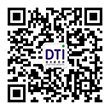Matters Needing Attention in Handling MSDS/SDS Reports
Date:2025-07-09 09:32:56 Classification
:【question】 Visits:
Notes on handling MSDS/SDS reports
I. Accuracy and completeness of content
1. Comprehensiveness of information
The report must include 16 standardized contents: chemical identification, ingredient information, hazard overview, first aid measures, fire prevention measures, leakage treatment, operation and storage requirements, protective measures, physical and chemical properties, stability, toxicological data, ecological impact, waste disposal, transportation information, regulatory requirements and other information.
- Key details: Hazard categories (such as flammable, toxic), exposure routes and emergency response steps must be clearly marked.
2. Data reliability
All data must have scientific basis, such as ingredient ratio, toxicity test results, etc. If the company cannot provide complete data, it must entrust a third-party agency to conduct testing.
II. Compliance with regulations and standards
1. Target market adaptation
- EU: Must comply with REACH and CLP regulations and provide registration number (if applicable).
- US: Follow OSHA and ANSI standards and emphasize operational safety and first aid measures.
- Canada: Must include 9 core contents, such as reactivity data, preventive measures, etc.
2. Update requirements
Regularly check regulatory changes (such as new hazardous substance limits) and product formula adjustments, and update reports in a timely manner.
III. Format and language specifications
1. Standardized format
Use the GHS (Global Harmonized System of Classification and Labeling of Chemicals) format to ensure that hazard labels (such as pictograms, signal words) comply with international standards.
2. Language requirements
- English version is required for international trade, and local language is required for target markets.
- Chinese reports must include the Chinese name of the chemical and supplier information.
IV. Application process and document preparation
1. Material list
- Product samples are used for testing.
- Technical documents: ingredient list, instructions for use, safe operating guidelines.
2. Fill in the application form
- Clear handwriting, clear test methods (such as EN, ASTM standards) and report versions (Chinese/English).
- Indicate the product use and the expected contact population (such as industry/household).
5. Special precautions
1. Distinguish between MSDS and transportation report
- MSDS is a safety data sheet, while UN38.3 is a lithium battery transportation test report. The two have different uses and need to be handled separately.
2. Selection of professional institutions
- Give priority to entrusting laboratories with CMA/CNAS qualifications to ensure international recognition of the report.
- Cost reference: Ordinary products are about 500 yuan, and dangerous goods (such as batteries) cost more.
6. Common problems to avoid
- Information omission: Avoid missing key content such as component ratios and first aid measures.
- Version confusion: After the implementation of GHS, some countries (such as Canada) no longer accept the old name "MSDS" and need to use "SDS" uniformly.
Summary
MSDS/SDS report handling must take into account technical accuracy, regulatory compliance and format standardization. It is recommended that enterprises establish an internal audit mechanism, update reports regularly, and cooperate with professional institutions to reduce risks. If you need specific operational guidance, you can refer to other sources.




 Shen Gongwang Security: 44030602006947
Shen Gongwang Security: 44030602006947